Outrun
1980. The pop artist Eizin Suzuki makes his debut. Suzuki's work mostly consists of peaceful, idyllic portrayals of the American west coast, with lots of exquisitely detailed cars and architecture. You've probably seen his work on the cover of Tatsuro Yamashita's "For You." Suzuki's work is tremendous, at least on a technical level, if nothing else. There's a part of me that's actually pretty sad that this version of America is only idealized. This leads me to my interpretation of Suzuki's work: it's very empty, almost cynical in a way. Empty highways. Empty buildings. Empty cars. People rarely appear in Suzuki's illustrations. Just depictions of lavish concentrations of wealth, with nobody around to enjoy it. It's a facade. It is an America that does not exist, nor has ever existed. Me being somewhat sad that this isn't a real America led to me realizing that Suzuki's work can be looked at as a form of escapism. We are not a harmonious country where we get into high-end cars, travel the open, traffic-free highways, then come home to our beachfront properties. But that would be pretty cool if we could, right? The wistful feelings I get when looking at Suzuki's work is why I like it so much. Whether or not my interpretation of his work is true, Eizin Suzuki is still an amazing artist.
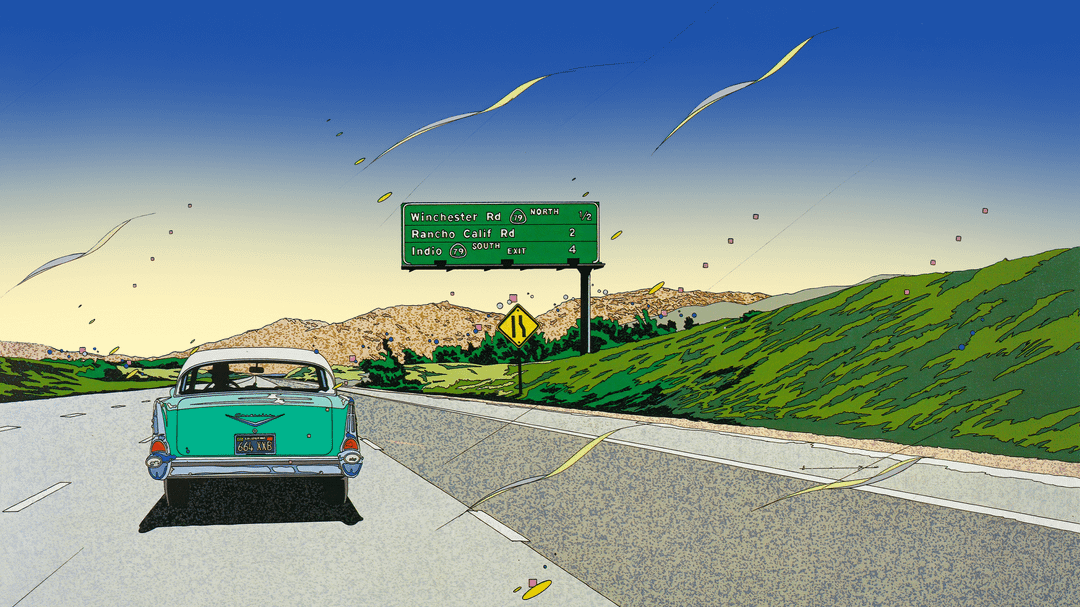
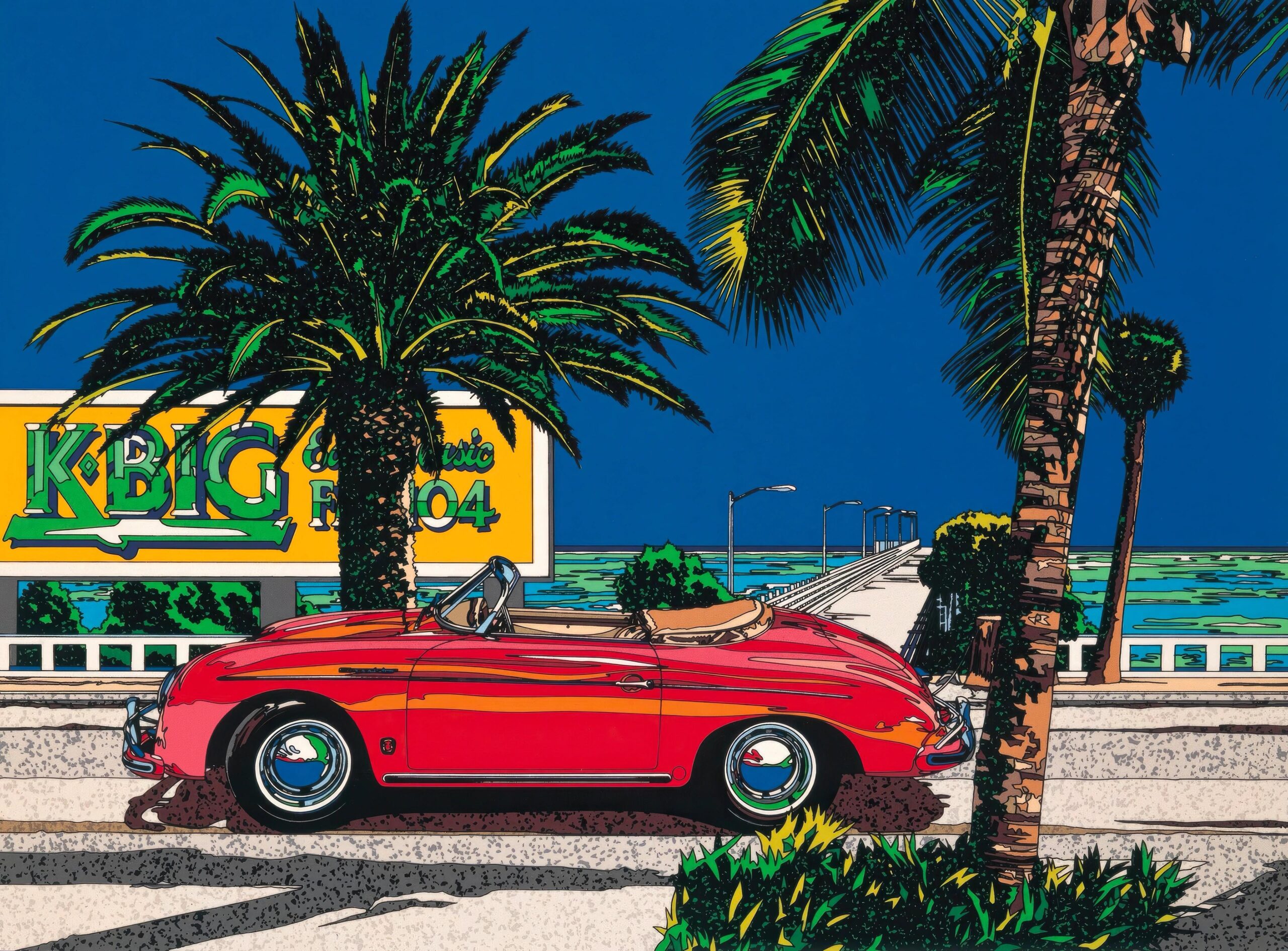
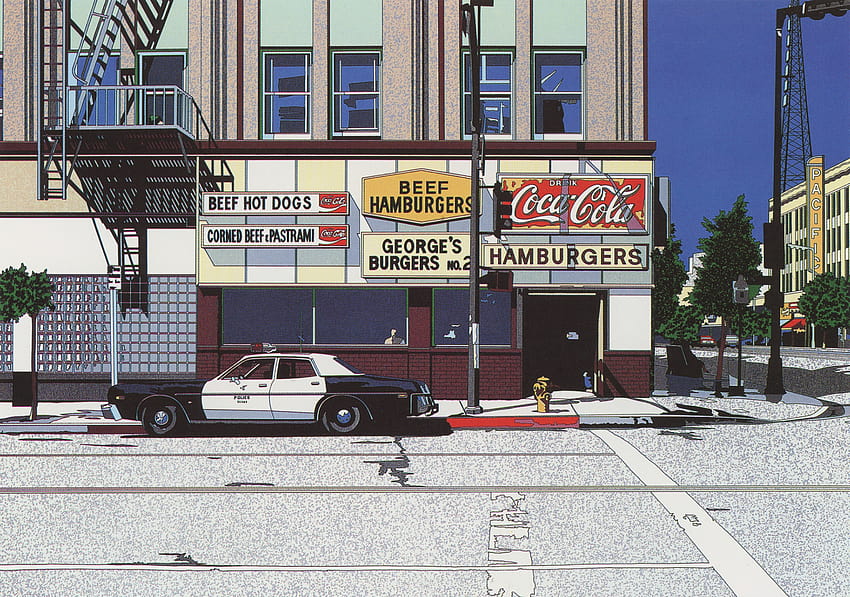
1986. Sega AM2 releases Outrun, a game that still manages to remain iconic despite the staggering number of hits Sega would release in arcades and at home. The game's lead designer, Yu Suzuki, has stated that the main influence on the creation of Outrun is the movie Cannonball Run, which makes sense: Outrun is also a light-hearted take on a race across the US. But I've always wondered if the game wasn't also inspired by the works of Eizin Suzuki. Fancy cars (in this case, a Ferrari Testarossa) driving across the peaceful blue ideal of America.
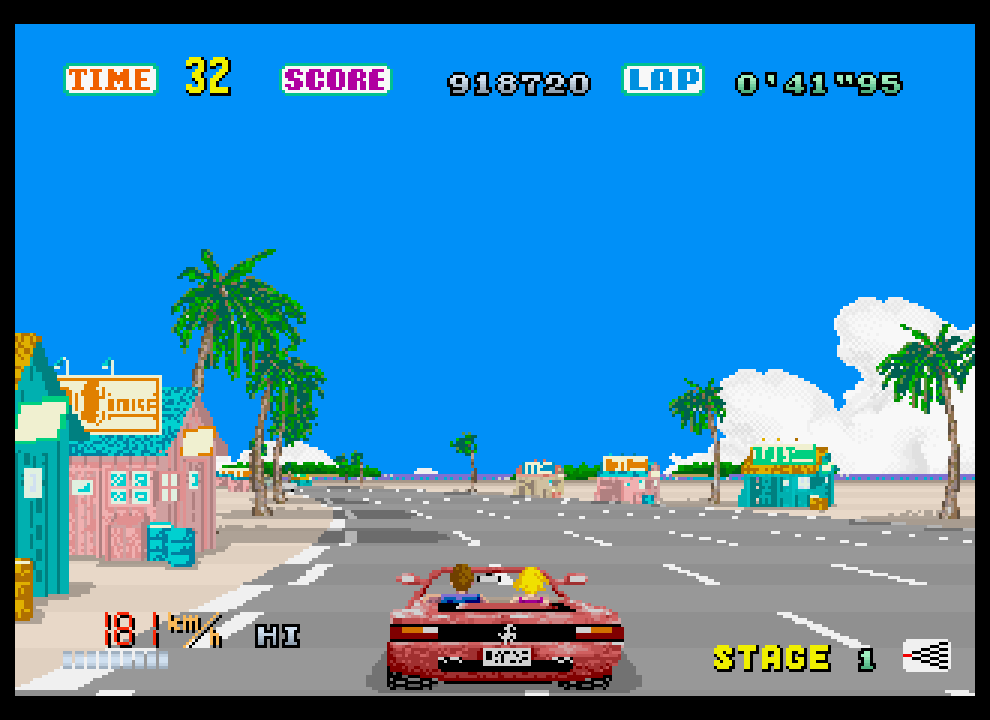
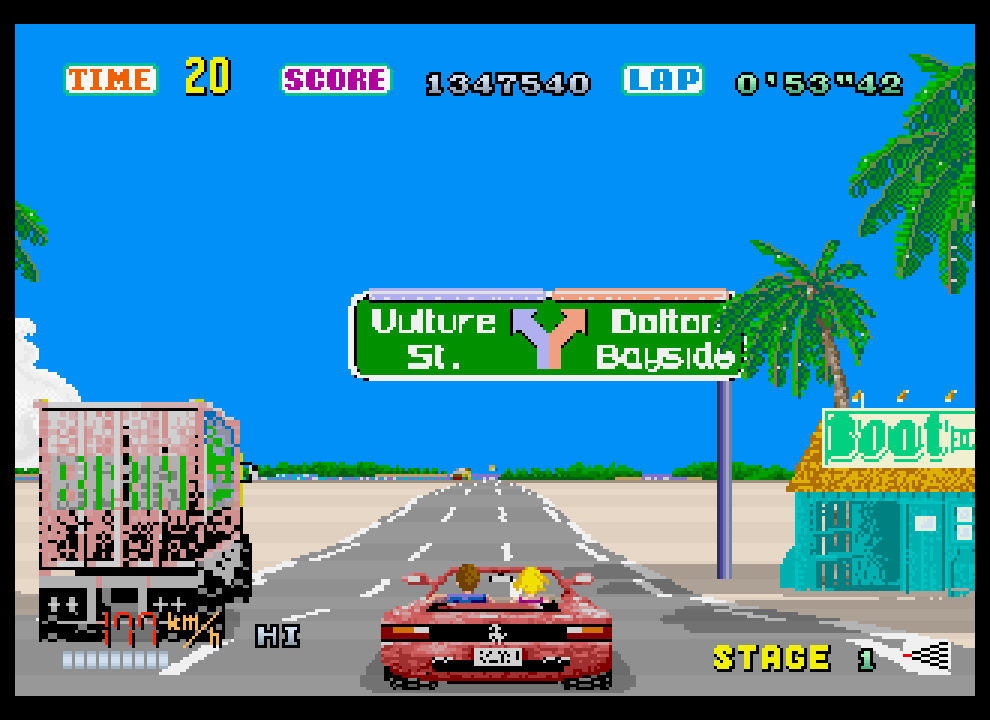
Outrun tries to provide a different tone, attempts to liven up the scenery. Gone is the isolation and desolation. Instead, the road is filled with plenty of other cars, clustered groups of spectators are gathered on the side, and the driver's girlfriend accompanies you the entire time in the passenger seat. It is impossible to be alone. You are always with someone, whether it's just your girlfriend, or a cheering crowd. It should also be mentioned that Outrun is not a racing game; there are no other cars to compete against. Rather, Outrun is a driving game. The only thing you compete against is the clock. In theory, this is a much more relaxing experience than other games in its genre, allowing you to spend more time taking in the visuals and listening to the Casiopea inspired soundtrack.
But like with Eizin Suzuki's work, Outrun is about escapism. It's that desire for the finer things in life. You get into a fancy car most people will go their entire lives never being able to afford, accompanied by a beautiful woman, sightseeing across a perfect America that doesn't exist, all under the clearest skies. The funny thing is, even with all these extra characters hanging around you, Outrun is no less lonely than any Eizin Suzuki painting. It's all about driving forward. Where are you going? What are you getting away from? It doesn't matter. You just keep going. Going far away to some other, more ideal, life. Your reward is a short celebration at a dead end road, followed by a somewhat wistful song set to a gorgeous pixel sunset.
Outrun is kind of an empty feeling game. I don't mean that in a bad way. It is empty in the same way that Eizin Suzuki's paintings are empty. You take in these gorgeous sights and sounds, then feel bad that your life isn't as peaceful as what is being presented. But then you feel bad about feeling bad, because let's be honest, this dreamy ideal is based entirely out of materialism and consumerism, and I should be old enough and smart enough to know better. But to hell with it, I'm weak and I want to drive a cool car with a hot girl through fucking paradise.
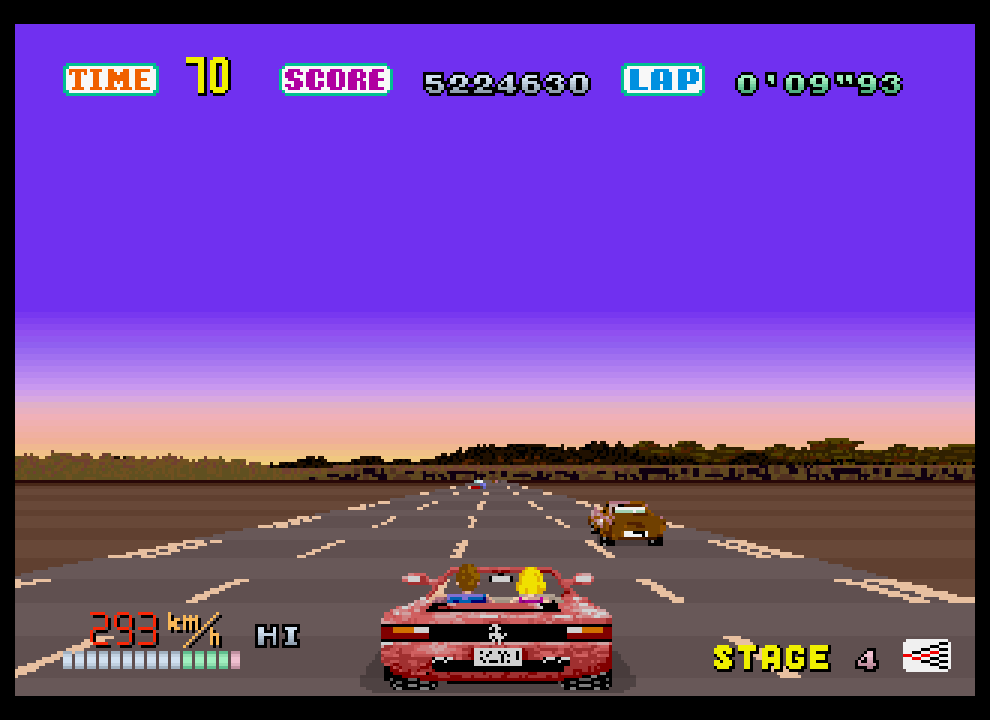
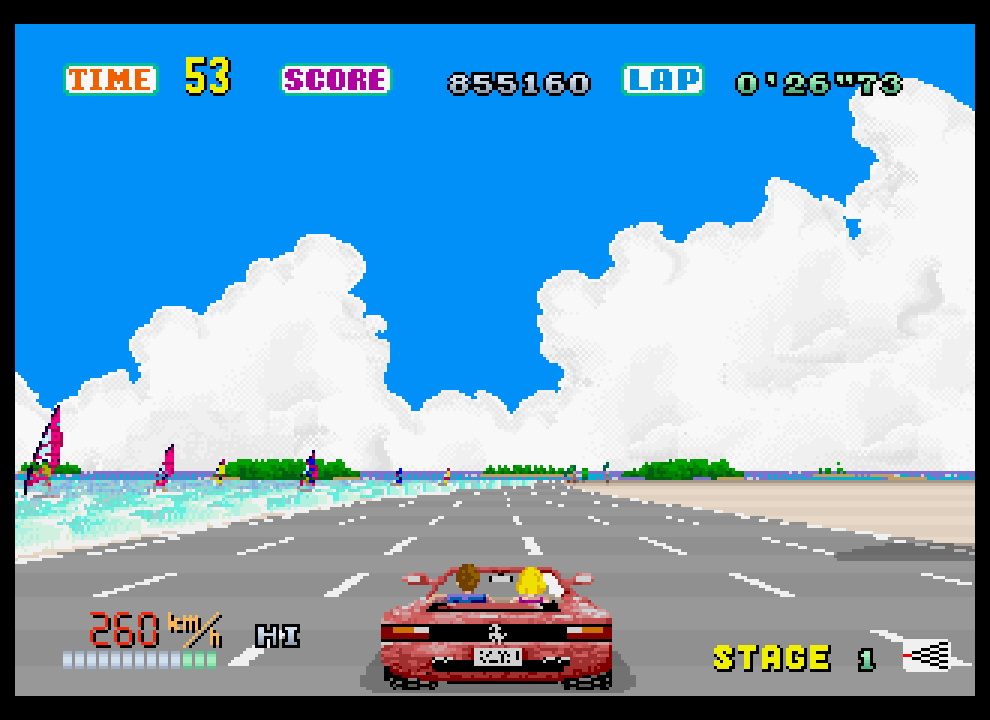
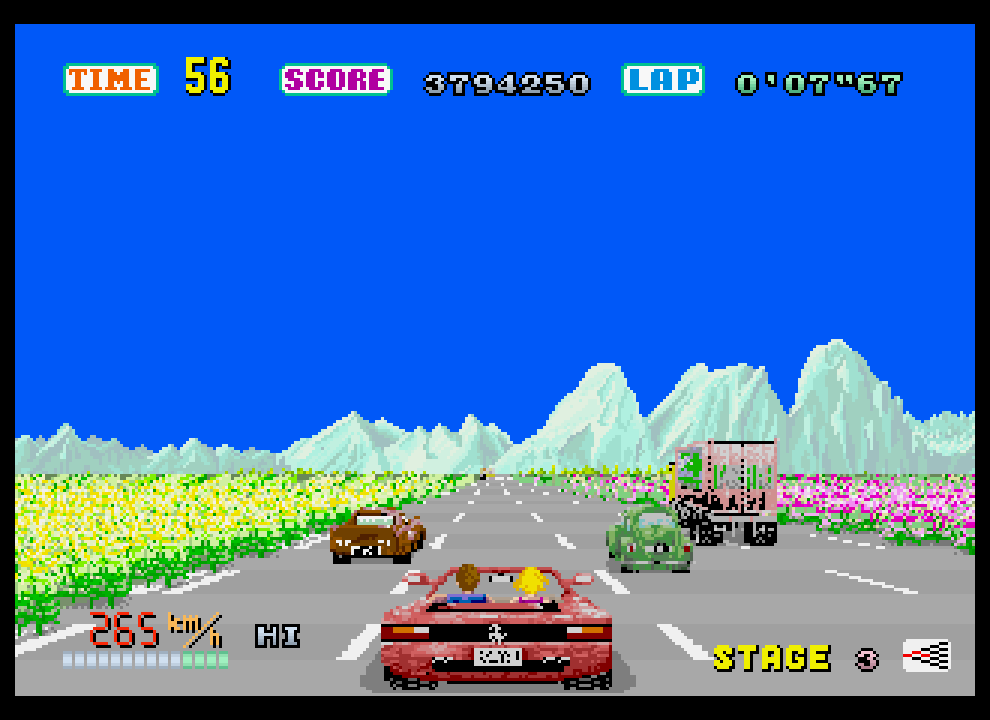

Comments